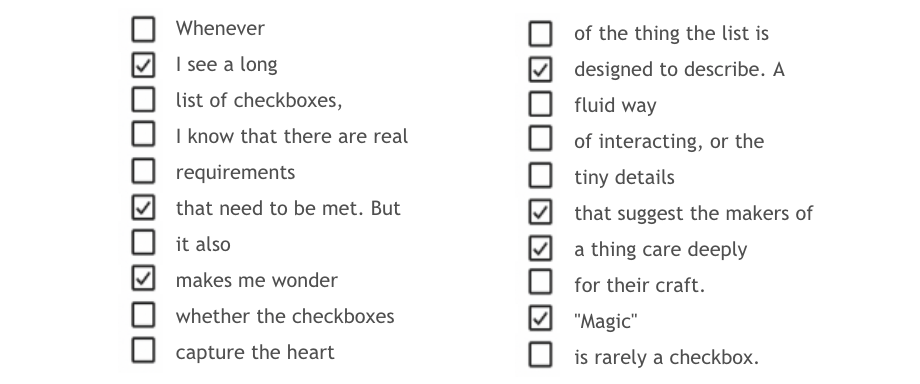Seriously– data on the web is a solved problem, right? So why is it still so hard for SaaS companies to give their customers fast, interactive dashboards that prove value, answer questions, and win renewals?”
That’s not how it is.

To get data to your customers takes a tremendous amount of developer time, which takes companies away from their core focus. And after all that time and expense, the dashboards tend to be slow, poorly visualized, and wholly inadequate to purpose.
Case in point: one company we talked with had 10 people out of a dev team of about 150 on reporting, had been working on it for six months, and still thought their reporting “awful” (in the words of the CEO).
Ten developers. Six months. And it’s still “awful.”
It's not great for the people using the data, either. It’s not unusual to see tables of data that you have to page through… and I guarantee (because I’ve seen it) that some people submit support tickets because they can only find the records that start with the letter “A.”
There's a reason data on the web is hard, and therefore generally bad. To build a great data experience, you need four specific skill sets:
Very few people, or even teams, have all of this expertise, and so shipping data includes multiple learning curves— or results in bad dashboards.
Every SaaS company provides reporting. I’ve heard people say, “It’s a checkbox feature.”
But the best companies know that great data can show your customers the value of the system they’re using. Analytics capabilities show up in G2 product comparisons, analyst reports, and other reviews. They becomes a differentiator and a reason for customer loyalty.
I’ve lived this problem from two different angles: at Tableau, we enabled embedding dashboards with the best technology available at the time-- which was still too slow. Then, at Salesloft, I saw how-- even with a modern data stack-- developers, designers and data engineers had to spend far too much time to create dashboards.
Almost every C-level leader I talk with has struggled with this problem. It’s the problem we’re addressing at Ridge AI, using a new browser-based tech stack and AI to reduce the time to develop. If you’re one of those people, reach out– I’d love to show you what we’re building.
